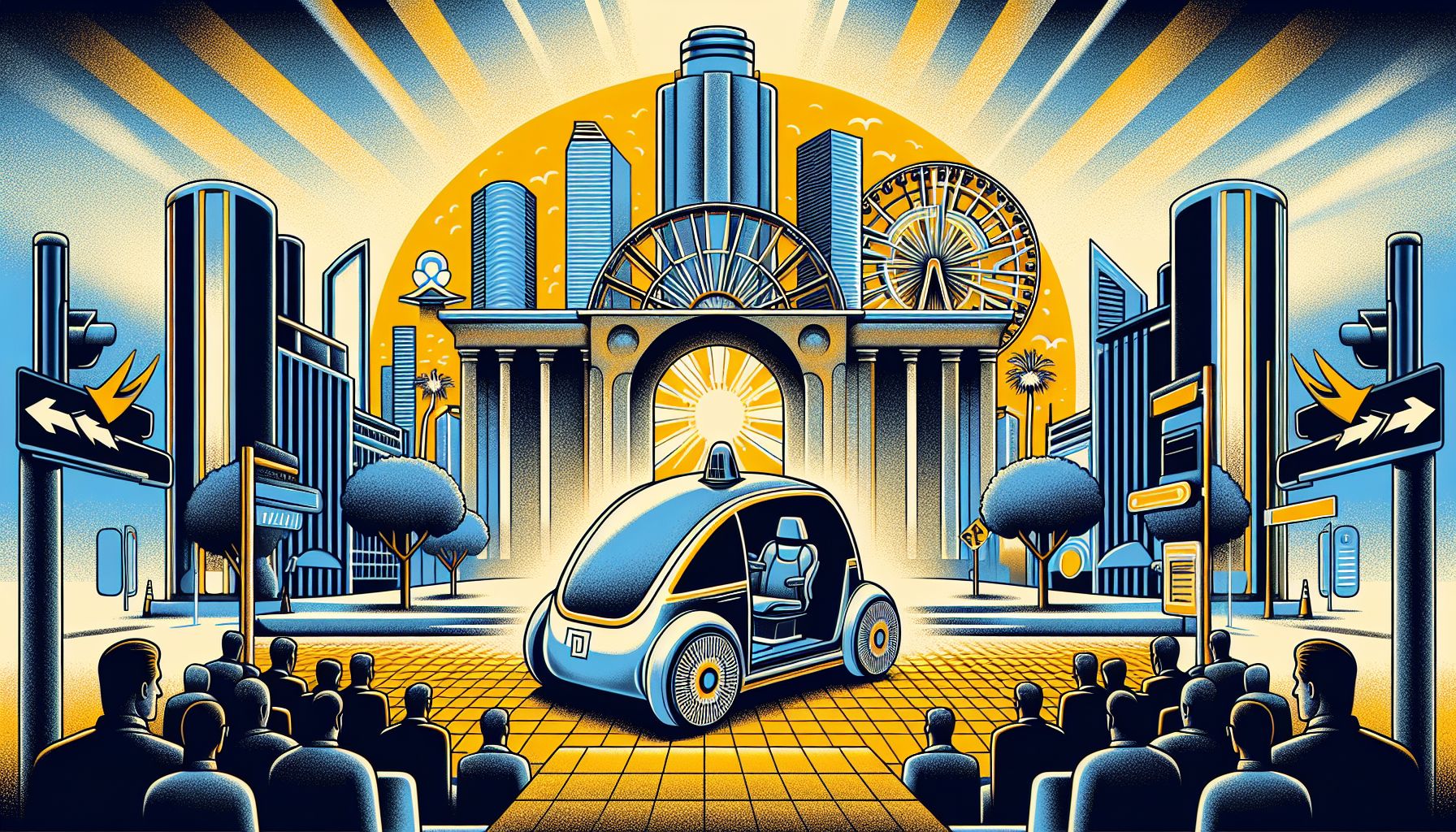Tesla's Robotaxi Reveal: A Leap Towards Autonomous Urban Mobility

Hollywood, Friday, 11 October 2024.
Tesla unveils its highly anticipated robotaxi, challenging industry leaders like Waymo and Cruise. The ‘Cybercab’, expected to have two seats and no steering wheel, marks a significant step in Tesla’s vision for the future of transportation, despite regulatory hurdles and skepticism from critics.
The Unveiling of the Cybercab
Tesla’s unveiling of the ‘Cybercab’ took place at Warner Bros. Studios in Burbank, California, on 10 October 2024. This event, dubbed ‘We, Robot’, was livestreamed on Tesla’s X platform, drawing significant attention from both industry insiders and the general public. Elon Musk, Tesla’s CEO, presented the Cybercab as a revolutionary advancement in autonomous technology, emphasizing its potential to redefine urban mobility[1][3].
Design and Technological Innovations
The Cybercab is designed to operate without a human driver, featuring two seats and devoid of traditional controls like a steering wheel or pedals. Instead, it relies on a sophisticated camera-based navigation system, which Musk asserts will outperform the LiDAR technology used by competitors. This minimalist design aligns with Tesla’s vision of a fully autonomous vehicle fleet, although it has faced criticism for the potential safety risks of such a system[4][5].
Potential Impact on Urban Mobility
Elon Musk has repeatedly stated that autonomous vehicles, like the Cybercab, are crucial for Tesla’s future profitability. By utilizing high-margin software, Tesla aims to transform the economics of urban transport. The Cybercab is expected to reduce transportation costs significantly, making it a viable option for both private and shared use. Tesla plans to allow vehicle owners to rent out their Cybercabs when not in use, potentially creating a new revenue stream[2][6].
Challenges and Regulatory Hurdles
Despite the ambitious claims, Tesla’s path to deploying the Cybercab is fraught with challenges. Regulatory approval remains a significant hurdle, as the U.S. currently lacks federal laws governing fully autonomous vehicles. Tesla’s approach of relying on a camera-based system has also been criticized for its ‘train and pray’ methodology, which some experts believe lacks the rigor needed for safety-critical applications. This skepticism is compounded by recent setbacks faced by competitors like Cruise, which had to suspend driverless operations after an incident in San Francisco[5][7].
Future Prospects and Market Position
The Cybercab’s introduction positions Tesla as a formidable competitor in the autonomous vehicle market, especially against established players like Waymo and Cruise. While Tesla’s stock has experienced volatility in the lead-up to the event, the long-term potential of its autonomous fleet is seen as a major growth driver. Analysts are closely watching how Tesla navigates the regulatory landscape and addresses safety concerns, which will be critical to the Cybercab’s success and broader adoption[3][6].

